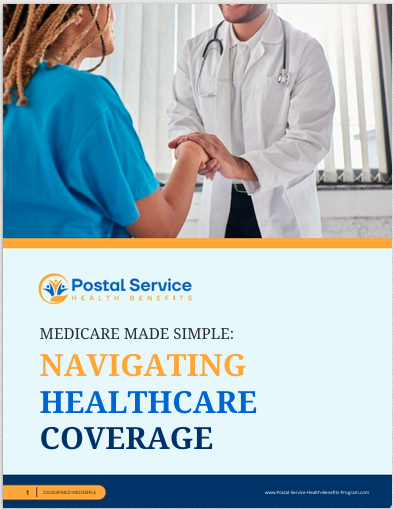Key Takeaways:
-
Enrolling in Postal Service Health Benefits (PSHB) plans can be a smooth process when you understand the steps and timelines involved.
-
Knowing what to prepare ahead of time will help you make informed decisions and avoid unnecessary stress.
Getting Started with PSHB Enrollment
Navigating the Postal Service Health Benefits (PSHB) program doesn’t have to be overwhelming. Whether you’re a postal employee, retiree, or a family member, understanding the enrollment process can save you time and hassle. With the right approach, you can navigate this process confidently. Let’s break it down step by step to ensure you’re fully prepared to choose the best plan for your needs.
Who Needs to Enroll?
The transition to PSHB plans applies to all Postal Service employees, retirees, and eligible family members. If you were previously covered under the Federal Employees Health Benefits (FEHB) Program, you must enroll in a PSHB plan to maintain your health coverage. However, some exceptions exist, such as those covered under a family member’s FEHB plan. Understanding these details early is critical to avoiding lapses in coverage.
If you’re Medicare-eligible, you’ll also need to enroll in Medicare Part B to maintain your PSHB coverage unless specific exemptions apply. Medicare integration offers significant advantages, such as reduced out-of-pocket costs and expanded benefits, so make sure you’re clear on what’s required to avoid interruptions in coverage.
Key Dates to Remember
Open Season Enrollment Period
The Open Season for PSHB typically runs from mid-November to mid-December each year. For 2025, it’s from November 11 to December 13. This is your opportunity to review your options, make changes, or enroll in a new plan. Planning ahead will ensure you have ample time to compare plans and submit all required documents.
Special Enrollment Periods (SEP)
Outside of Open Season, you can only make changes during a Special Enrollment Period triggered by specific life events. These include marriage, birth or adoption, or losing other health coverage. Ensure you act promptly, as SEPs often have strict deadlines—typically within 30-60 days of the qualifying event. Missing these deadlines could mean waiting until the next Open Season to make changes.
Step-by-Step Guide to Enroll in a PSHB Plan
1. Review Your Current Coverage
Before making any changes, assess your current healthcare needs and coverage. Ask yourself:
-
Is my current plan meeting my needs?
-
Have my medical or financial circumstances changed recently?
-
Do I need additional coverage for my family?
Take a close look at factors like copayments, deductibles, coinsurance, and out-of-pocket maximums. PSHB plans often have varying cost structures, so understanding your current expenses and coverage will help you choose a plan that aligns with your needs.
2. Explore Available PSHB Plans
The Office of Personnel Management (OPM) provides detailed brochures for all PSHB plans. These include information on premiums, deductibles, copayments, and specific benefits. As you compare plans, be sure to:
-
Look at the provider networks to ensure your preferred doctors and facilities are included.
-
Compare additional benefits such as dental, vision, or wellness incentives.
-
Consider the cost-sharing details, including prescription drug coverage and emergency care costs.
Taking time to thoroughly review plan options can help you avoid surprises later and ensure your healthcare needs are fully covered.
3. Understand Medicare Integration (If Applicable)
If you’re Medicare-eligible, coordination between Medicare and PSHB is crucial. Many PSHB plans offer reduced deductibles and cost-sharing for enrollees with Medicare Part B. Here are key points to remember:
-
Enrollment in Medicare Part B is required for most Medicare-eligible PSHB participants. This ensures seamless integration of benefits.
-
Your prescription drug coverage will automatically transition to a Medicare Part D Employer Group Waiver Plan (EGWP), which can help lower your medication costs.
-
Some PSHB plans may offer additional incentives for Medicare enrollees, such as partial premium reimbursements or waived deductibles.
4. Use the Online Enrollment Portal
The USPS Health Benefits website is the hub for all things PSHB. Once you’ve chosen your plan, use the portal to:
-
View and compare plan options side by side.
-
Submit your enrollment application securely.
-
Update your personal information, such as dependent coverage or address changes.
The portal’s user-friendly features make it easy to manage your enrollment process, but don’t hesitate to reach out for support if needed.
5. Prepare Required Documentation
Ensure you have the necessary documentation ready well in advance. Commonly required documents include:
-
Social Security numbers for all covered family members.
-
Birth or marriage certificates if enrolling dependents.
-
Proof of Medicare Part B enrollment if applicable.
Submitting complete and accurate documentation is critical to avoiding delays or errors in your coverage.
6. Submit Your Enrollment on Time
Once you’ve made your decision, submit your enrollment within the designated timeframe. Missing the deadline could result in losing your coverage or being locked into your current plan until the next Open Season. To avoid this, mark important dates on your calendar and set reminders.
What Happens After Enrollment?
Confirmation of Coverage
After you’ve submitted your application, you’ll receive a confirmation notice. Double-check the details to ensure everything is accurate. If you notice any discrepancies, contact USPS or your plan provider immediately to address the issue.
Effective Date of Coverage
For changes made during Open Season, your new coverage begins on January 1 of the following year. Special Enrollment Period changes typically take effect at the start of the next pay period. Understanding these timelines helps you avoid coverage gaps.
Tips to Make the Process Easier
Start Early
Don’t wait until the last minute to review your options or gather necessary documents. Starting early gives you ample time to make an informed decision and avoid unnecessary stress.
Take Advantage of Resources
The USPS and OPM websites are excellent resources for plan comparisons and enrollment guides. You can also contact your HR department or a benefits specialist for personalized assistance. These resources are invaluable for understanding the nuances of PSHB plans and making informed choices.
Keep an Eye on Costs
Understanding your out-of-pocket expenses is essential. Compare costs for:
-
Monthly premiums
-
Deductibles
-
Copayments and coinsurance
-
Prescription drug coverage and any associated limits
Paying attention to these details ensures that you select a plan that fits your financial and medical needs.
Ask Questions
If you’re unsure about any part of the process, don’t hesitate to reach out. Benefits specialists, HR representatives, and plan providers are there to help you. Getting clarification can prevent costly mistakes or lapses in coverage.
Avoid Common Pitfalls
Missing Deadlines
Missing the enrollment deadline is one of the most common mistakes. Mark your calendar, set reminders, and double-check deadlines to ensure you submit your application on time.
Choosing the Wrong Plan
Make sure you’re not just picking the cheapest option. Consider the plan’s network, benefits, and cost-sharing structure to ensure it meets your specific needs. Selecting a plan based solely on cost can lead to higher expenses down the line.
Overlooking Medicare Requirements
Failing to enroll in Medicare Part B if required can jeopardize your PSHB coverage. Ensure you meet all eligibility criteria and deadlines. If you’re unsure, reach out to a benefits specialist for guidance.
Ensuring a Stress-Free Enrollment
Taking the time to understand the PSHB enrollment process is the best way to ensure you and your family maintain the coverage you need. By following these steps and preparing in advance, you can make the transition to PSHB plans seamless and stress-free. With a little planning and the right resources, managing your health benefits doesn’t have to be a headache.





